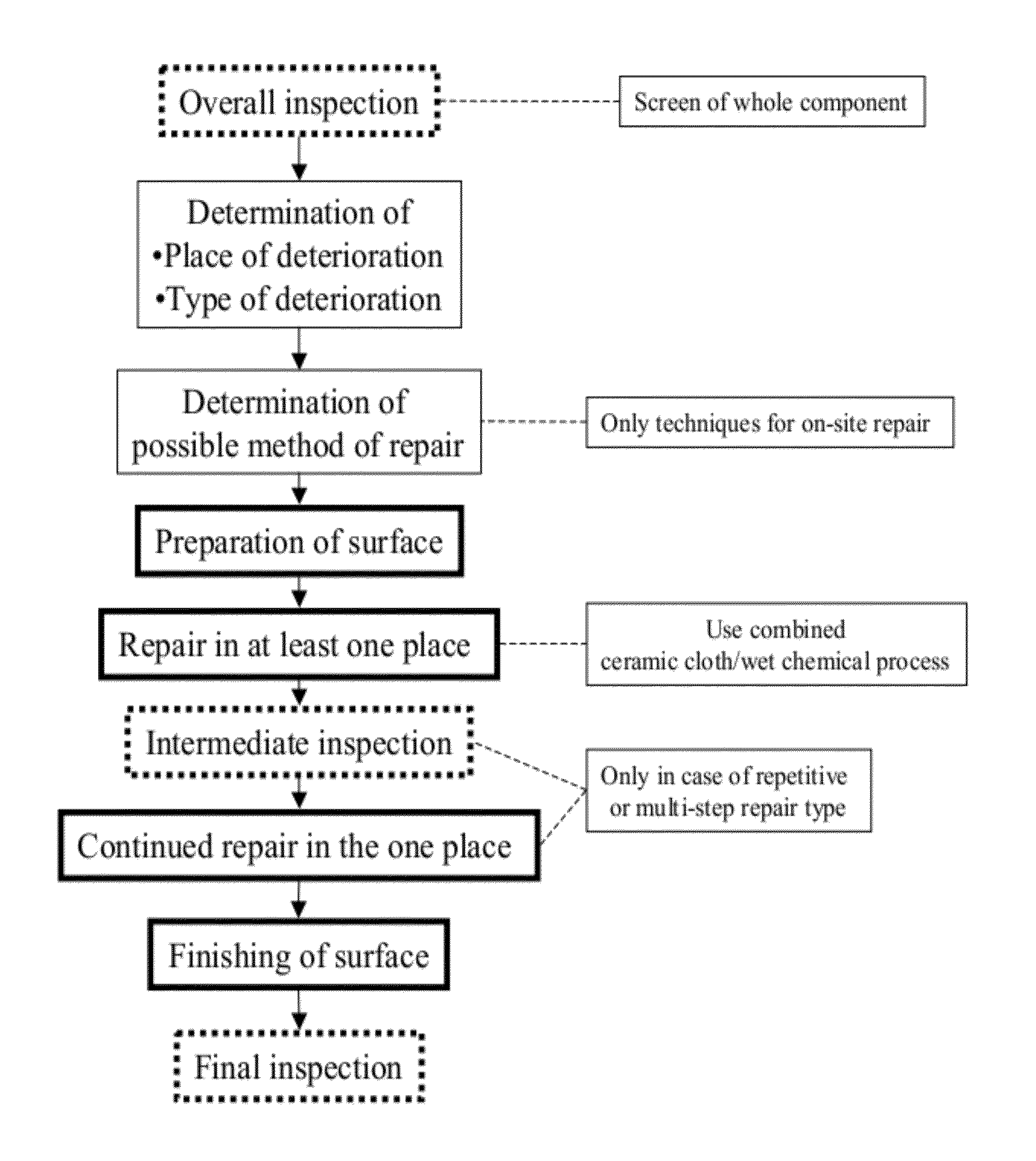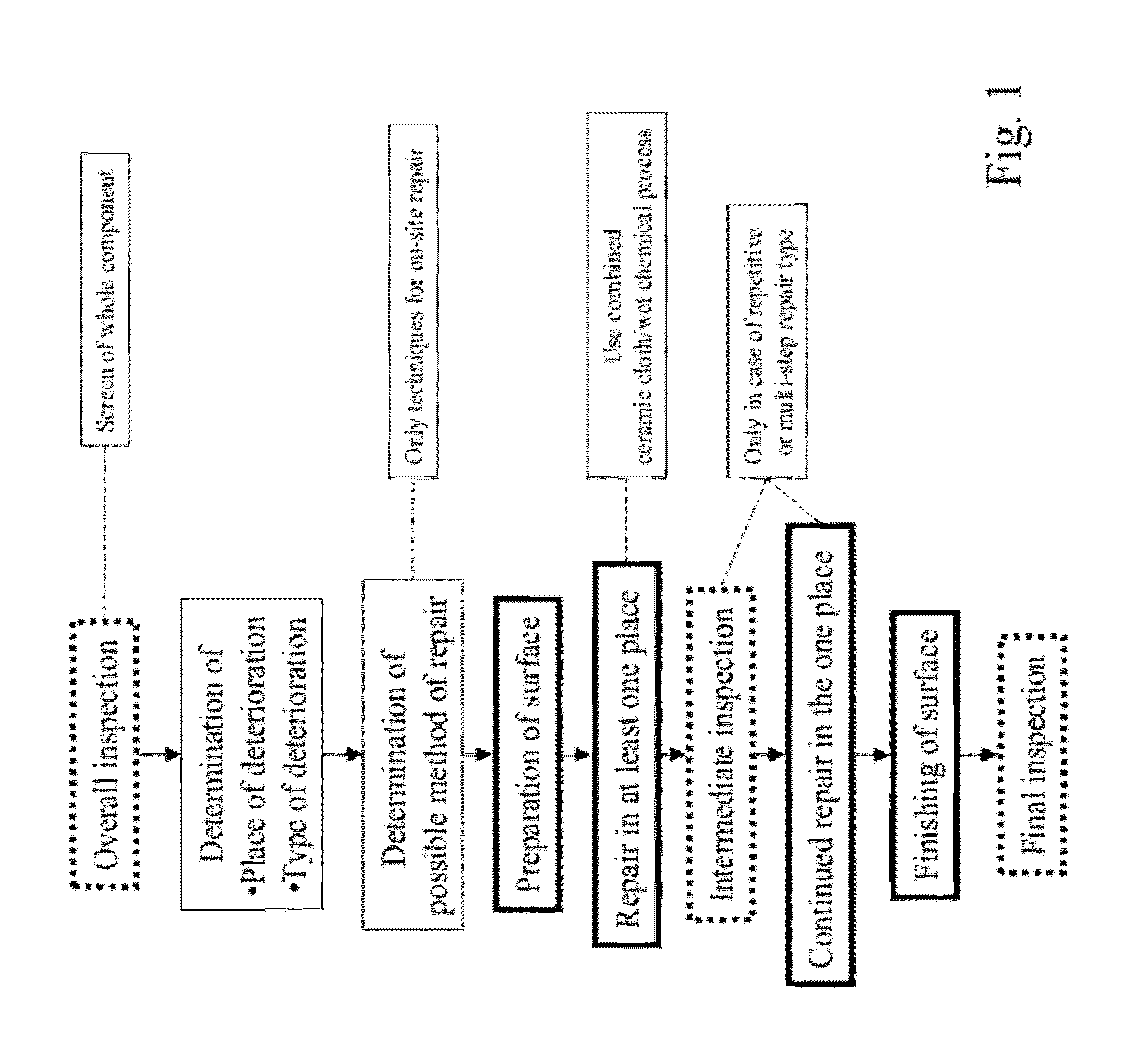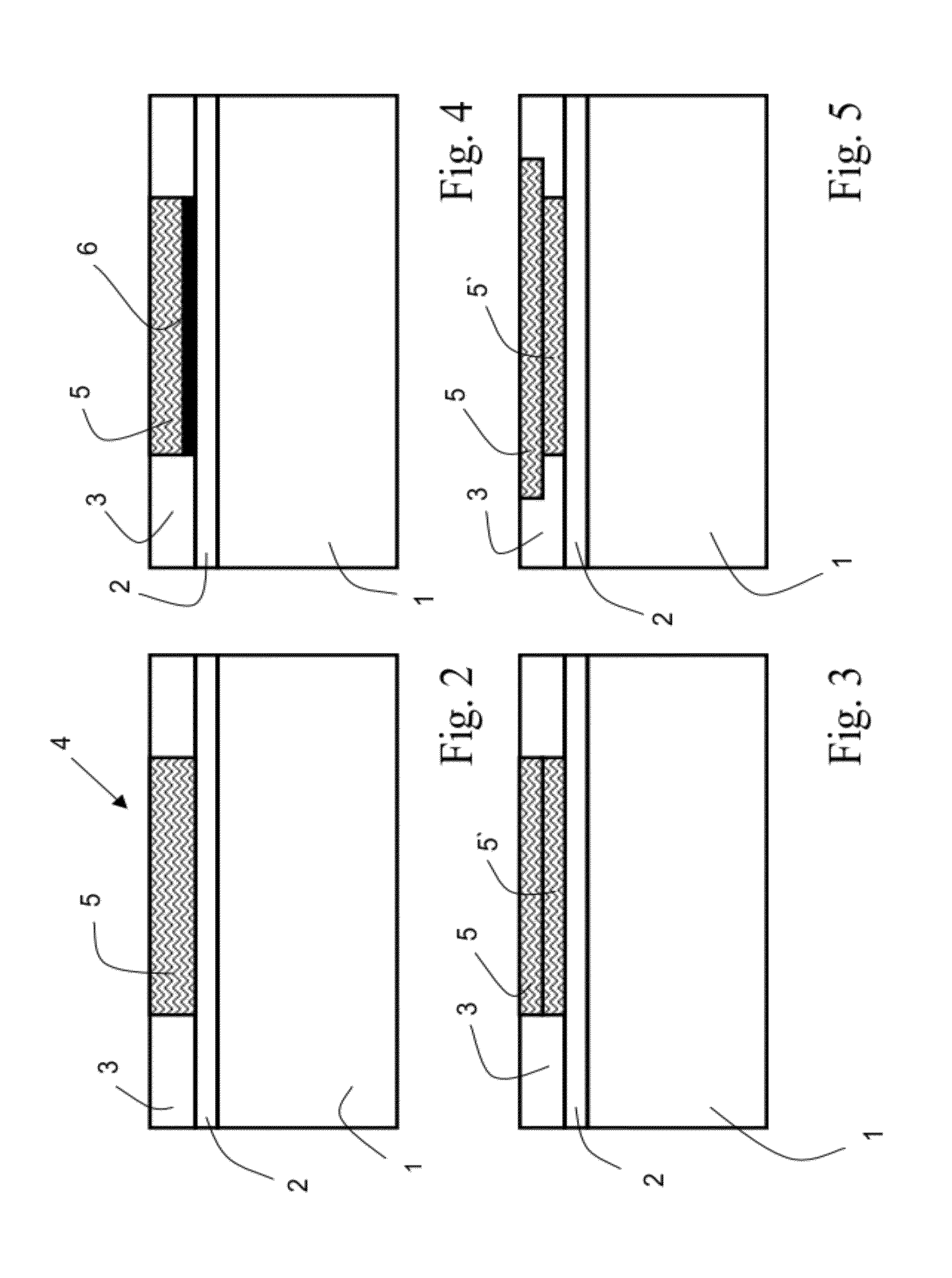Comprehensive method for local application and local repair of thermal barrier coatings
a thermal barrier coating and local application technology, applied in the direction of superimposed coating process, machines/engines, other domestic objects, etc., can solve the problems of localized loss of tbc layer, insufficient quality of coating, transport and installation damage, etc., to improve the strain tolerance of the repaired location, reduce shrinkage, and reduce shrinkage
- Summary
- Abstract
- Description
- Claims
- Application Information
AI Technical Summary
Benefits of technology
Problems solved by technology
Method used
Image
Examples
example 1
[0169]A coating patch as described above was fabricated on top of a sample made from a Ni-based alloy. Surface preparation in this specific situation was not performed since it was not necessarily, as the alloy was already coated with an oxidation resistant overlay coating providing a rough surface. After cleaning, as a first step a thin layer of ceramic slurry was applied to the surface. Subsequently and after application, a flexible ceramic tissue (Woven Knit Cloth, supplied by Zircar Zirconia, Inc.) of an adapted size was attached on top of the still-liquid slurry leading to an infiltration of at least the lower part of the tissue. After drying and curing using a hot air fan, an intermediate inspection step was carried out to check the adhesion of the composite layer to the substrate. In the second coating cycle a thin layer of ceramic slurry was applied onto the ceramic tissue again leading to an infiltration of at least the upper part and therefore a stabilization of the cerami...
example 2
[0173]The same method as described above under example 1 was used for making a patch of a barrier coating. In this second example, after application of each layer, the layer was structured using a honeycomb surface imprinting with an approximately 3 mm honeycomb cell size. For the structuring of the surface, a honeycomb pattern was imprinted into the surface by rolling a specifically structured tool over the ceramic slurry layer such that a pattern of grooves was generated with a penetration depth of the generated grooves of approximately 50 μm. The generated pattern was shifted for each subsequent layer, so the generated grooves of the subsequent layers were staggered with respect to each other (see also FIG. 9).
[0174]The resulting coating structure in the patch region was free of cracks and attached well to the underlying structure.
PUM
| Property | Measurement | Unit |
|---|---|---|
| honeycomb cell size | aaaaa | aaaaa |
| penetration depth | aaaaa | aaaaa |
| structure | aaaaa | aaaaa |
Abstract
Description
Claims
Application Information
 Login to View More
Login to View More - R&D
- Intellectual Property
- Life Sciences
- Materials
- Tech Scout
- Unparalleled Data Quality
- Higher Quality Content
- 60% Fewer Hallucinations
Browse by: Latest US Patents, China's latest patents, Technical Efficacy Thesaurus, Application Domain, Technology Topic, Popular Technical Reports.
© 2025 PatSnap. All rights reserved.Legal|Privacy policy|Modern Slavery Act Transparency Statement|Sitemap|About US| Contact US: help@patsnap.com



